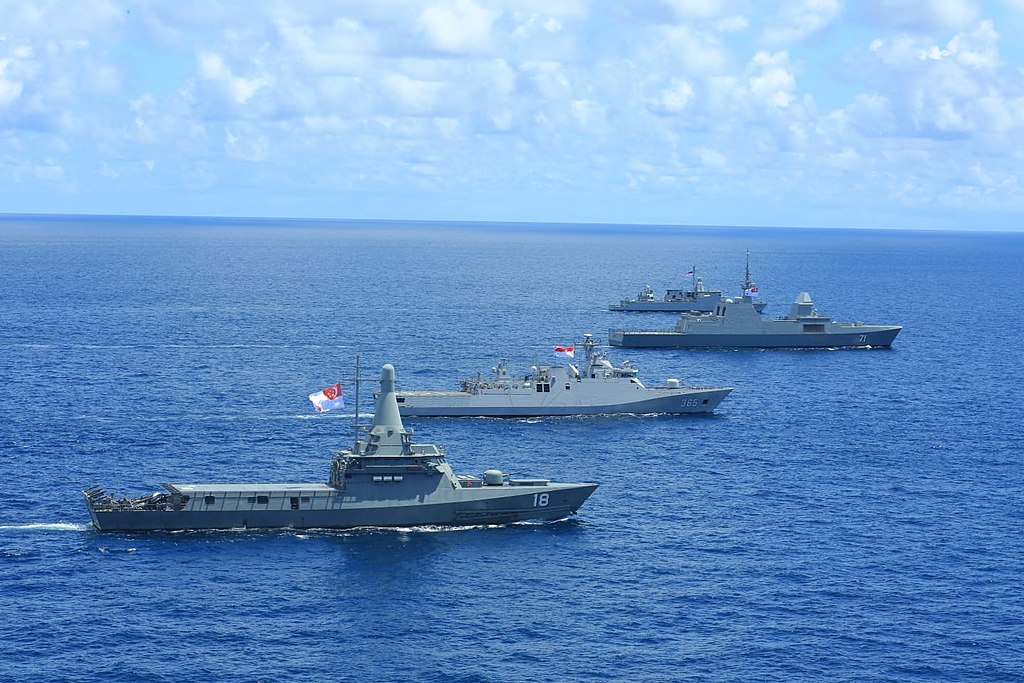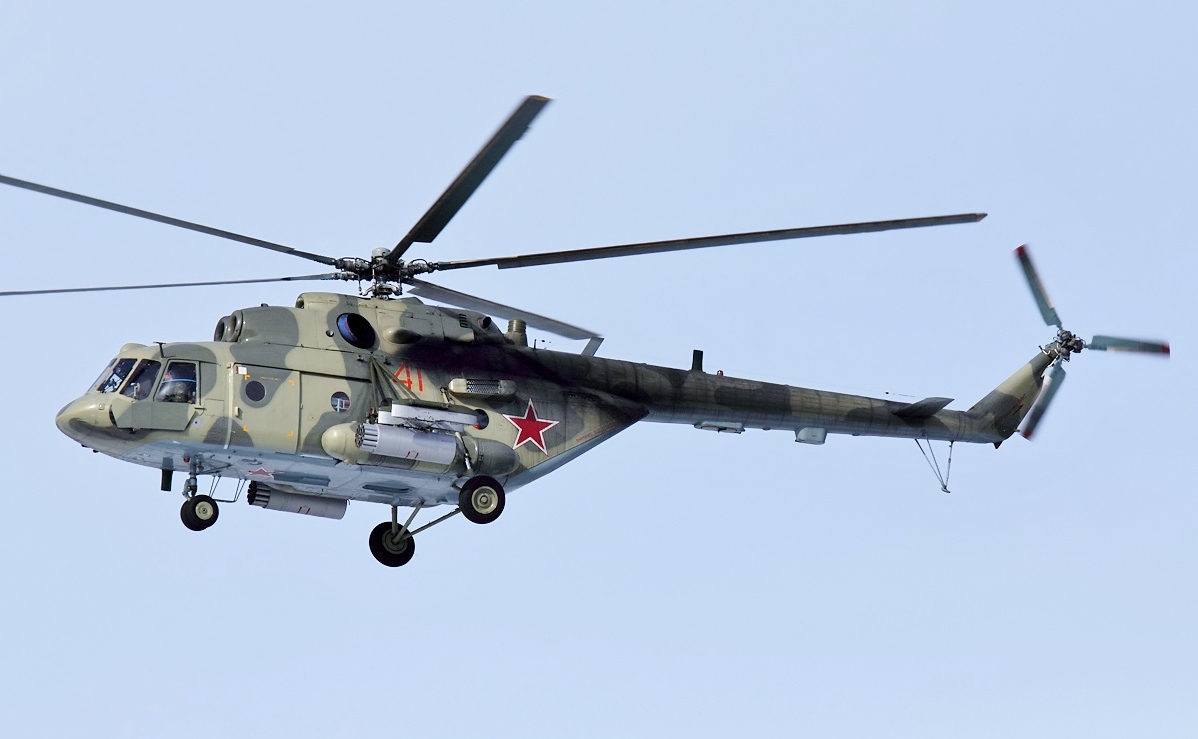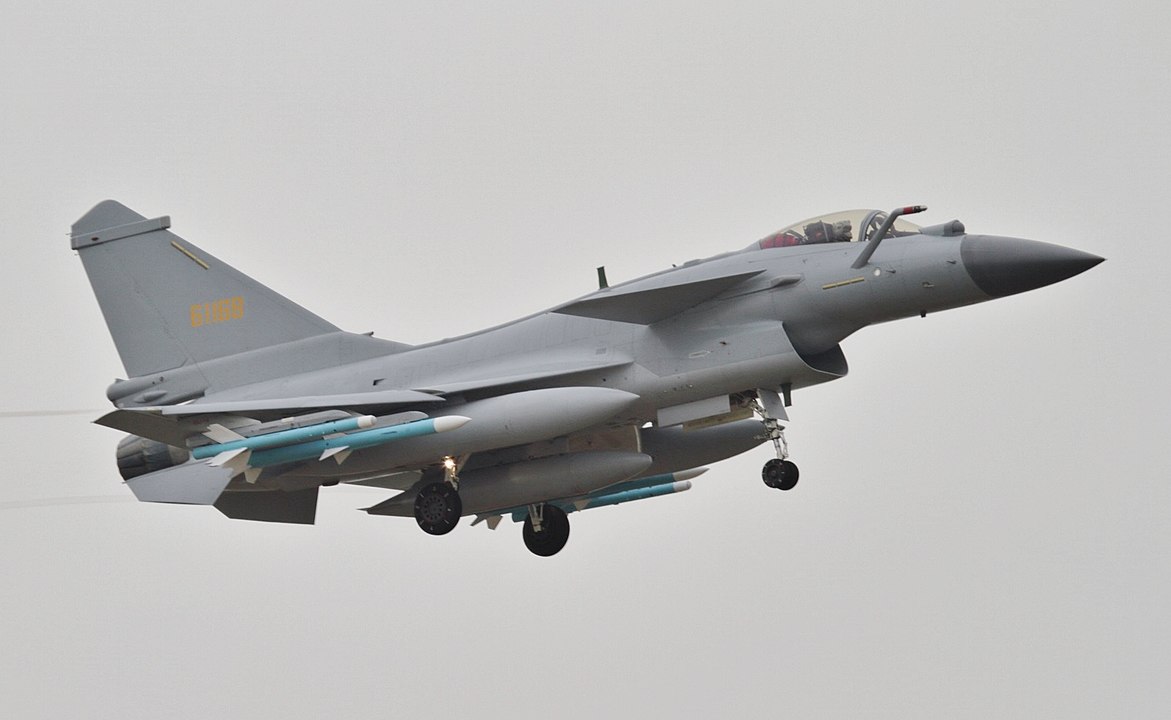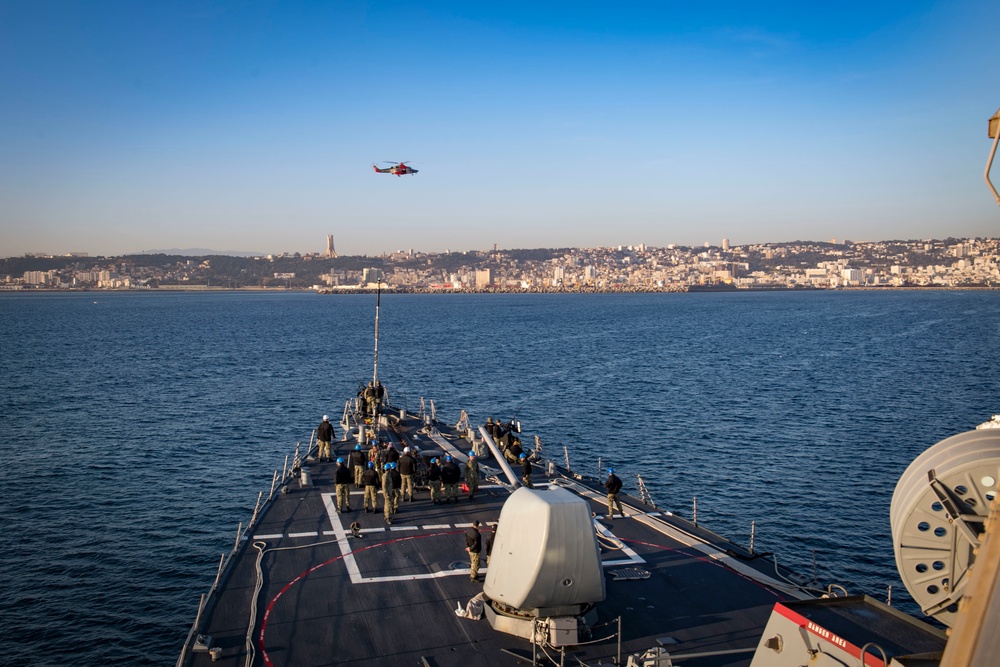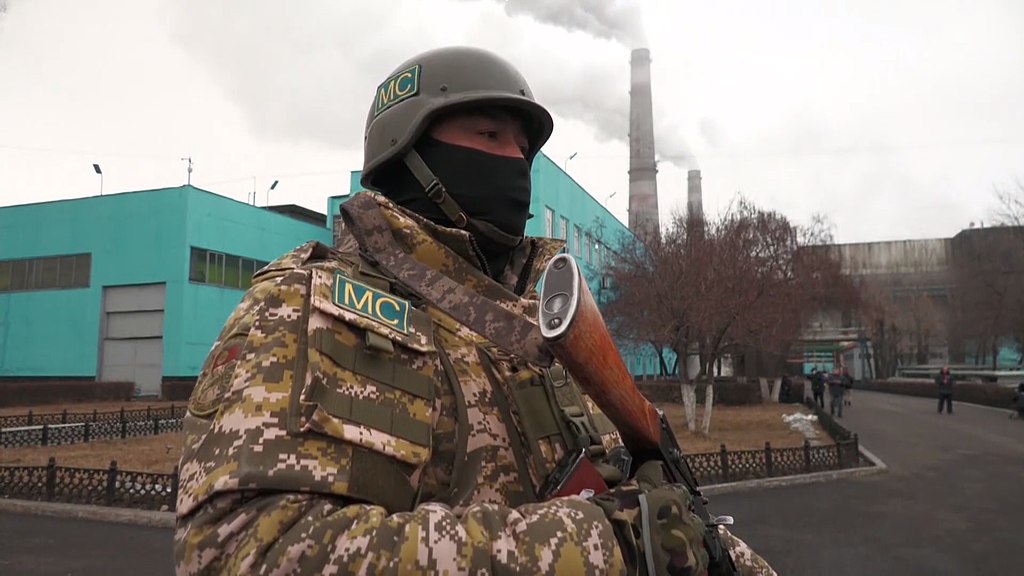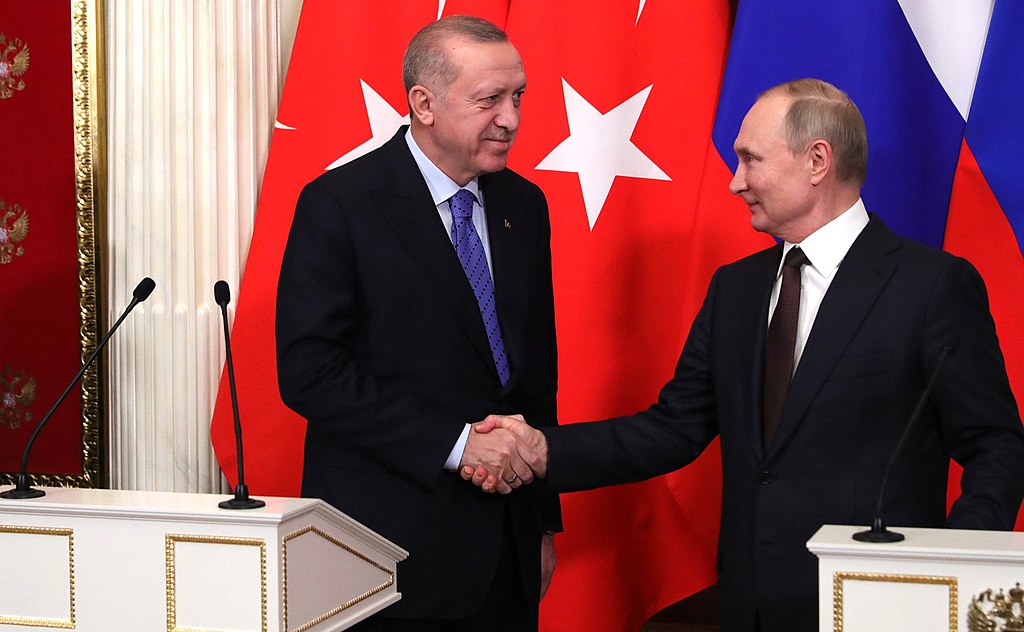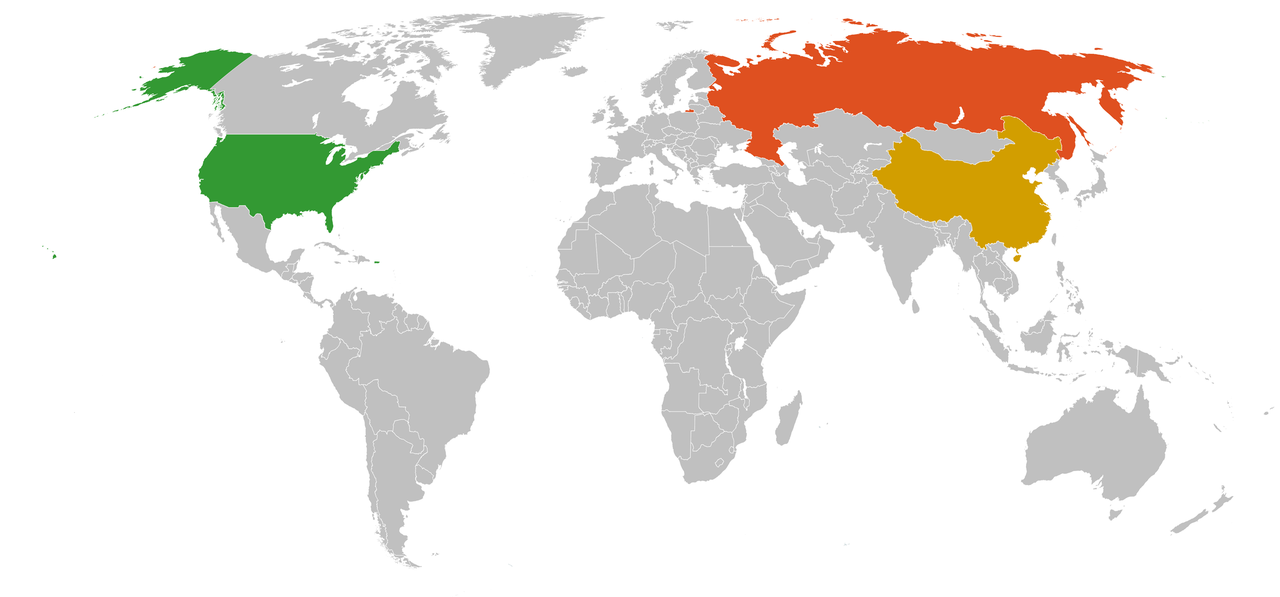Vladimir Putin and Recep Tayyip Erdoğan.
“…as long as Turkey keeps its relations with the West strong, it will find a more comfortable space for itself against Russia.”
Turkey’s recent purchase of S-400 systems from Russia has led to questions about Turkey’s “western-ness” and trustworthiness as a NATO ally. Traditionally a pro-Western country, Turkey’s increasing shift towards Russia despite their complex relationship is one of the biggest geopolitical shifts since the Cold War. As such, the evolution of Turkish-Russian relations will have implications for the United States, NATO, and great power competition. The accompanying articles from Turkish sources provide an outlook on Turkish-Russian relations, discussing both issues of contention and cooperation.
The articles, one from pro-government Turkish newspaper Hürriyet and another from the Istanbul-based independent think tank Center for Economics and Foreign Policy Studies (EDAM), note that the points of friction between Turkey and Russia are the implementation of the ceasefire in Nagorno-Karabakh; developments in Libya; tensions in Syria’s Idlib Province; and changes in eastern Ukraine. The Syrian conflict has the potential to impact Turkish-Russian relations the most because, as the Hürriyet article highlights, Russia continues to strike Turkey-backed Syrian opposition forces around Idlib and Turkey’s areas of operation. The tensions between Russia and Turkey will likely increase once the Russia-backed Syrian regime launches an operation on Idlib. Both articles note the Ukrainian conflict will be another high-level point of friction between Turkey and Russia because of Turkey’s drone sale to Ukraine. However, according to the EDAM publication, despite these frictions, Turkey and Russia cooperate in the energy sector, including Russia supplying natural gas to, and building a nuclear power plant in, Turkey. Russia also maintains strong trade relations with Turkey, investing in its tourism and defense industry. The Hürriyet article also refers to President Erdoğan’s statement from September 2021 that Turkey will deepen its defense cooperation with Russia and is considering purchasing other weapons systems in addition to the recently purchased S-400s.
The EDAM article states that the foundation of Turkish-Russian relations is built on a personal dialogue between their presidents rather than on an institutional foundation, and Presidents Erdoğan and Putin have managed to de-escalate tensions so far when they rise. However, considering the points of friction, Turkish-Russian relations remain fragile. Finally, the Hürriyet article notes Turkish-Russian relations are asymmetrical and the scale will further tilt in Russia’s favor if Turkey continues to drift away from its Western allies. Therefore, the article suggests that Turkey should ensure its relations with its Western allies remain strong to counterbalance Russia.
Source:
Sedat Ergin,“2021’den 2022’ye Türk Dış Politikası (5)-Rusya ile çatışarak işbirliği modeli ilerlemeye devam ediyor (Turkish Foreign Policy from 2021 to 2022 (5)- Adversarial Cooperation model with Russia continues),” Hürriyet (a pro-government Turkish newspaper),04 January 2022. https://www.hurriyet.com.tr/yazarlar/sedat-ergin/2021den-2022ye-turk-dis-politikasi-5-rusya-ile-catisarak-isbirligi-modeli-ilerlemeye-devam-ediyor-41974354
The Russians see no harm in continuing their air operations in a region where TAF [Turkish Armed Forces] units are present. We can guess that with these attacks, Russia wants to maintain a certain pressure on Turkey, which prevented the regime’s army from entering Idlib, the last rebel stronghold in Syria…
The previous day also witnessed the first telephone conversation of the New Year between President Recep Tayyip Erdoğan and Russian President Vladimir Putin. Brief statements with largely similar content were made from both sides. In the Kremlin’s statement, there was an indirect reference to the Ukraine-linked NATO-Russia tension. Apart from this, it was stated that the topics of the Caucasus, Libya, and Syria were on the agenda in both of statements. Intention and determination to further the cooperation between the two countries were also emphasized as an important common theme in the texts.
…
Meanwhile, the importance of 2021 was that it was a year…[of] cooperation in Turkish-Russian relations that would extend to the coming years… President Erdoğan went to Sochi at the end of September and during the meeting he held with Putin, he proposed to his counterpart the construction of two new nuclear power plants in Turkey, in addition to Akkuyu… Putin also offered to cooperate with Turkey on launching rockets into space by establishing platforms at sea and on land.
A more critical development was that Erdoğan also suggested to Putin “deepening cooperation” in the defense industry during this meeting. In this context, the President announced that they discussed the further development of the S-400 project, and listed aircraft engines, warplanes, warship, and submarine construction as new potential areas of cooperation.
In this respect, Erdoğan is also trying to intimidate the USA and European countries by stating that the weapon systems that Turkey cannot obtain or have difficulty in obtaining from the West can very well be obtained from Russia. Although the second chapter of the S-400 project has not been signed, it remains on the table…
President Erdoğan keeps cooperation with Russia as a bargaining card in his hand against the West…
… Erdoğan followed a delicate balance between the USA and Russia throughout 2021… In any case, the continuation of cracks, conflicts, and tensions within the Western alliance, as well as the realization of new potential arms sales to Turkey, will be developments that will please the Kremlin.
This asymmetry will be widened further [in Russia’s favor] as Turkey’s relations with the West deteriorate… It should not be forgotten that as long as Turkey keeps its relations with the West strong, it will find itself in a more comfortable space against Russia. The decline in Turkey’s foreign relations with the west will also weaken Turkey’s hand against Russia.
Source: Doç. Dr. Çiğdem Üstün,“2022’de Türkiye-Rusya İlişkileri: İşbirliği-Rekabet İkileminin Devamı Beklenirken… (Turkey-Russia Relations in 2022: Expecting the Continuation of Cooperation-Competition Dilemma…),” Center for Economics and Foreign Policy Studies (EDAM) (Istanbul-based an independent think tank), 13 January 2022. https://edam.org.tr/wp-content/uploads/2022/01/2022ye-Bakis.pdf
Although relations with Russia have been handled on the axis of cooperation, especially in the energy and defense sectors in recent years, it is not a relationship model free from crises and problems… Because Turkey’s relations with Russia are based on bilateral relations between leaders rather than on institutional foundations, it has a relationship model that is difficult to be called sustainable…
The ceasefire in Nagorno-Karabakh, the possible developments in Libya, the tensions in and around Idlib, Ukraine and Belarus are noticeable issues that have the potential to affect relations.
…
Of course, it should not be ignored that as much as their problems [need a resolution], there are areas where Turkey and Russia are trying to develop cooperation. After the Blue Stream, the Turkish Stream project is a step taken to strengthen the energy ties between Russia and Turkey. Energy takes first place in Turkey’s imports from Russia.
…
Considering the problems experienced in its relations with the West, both the EU and the USA, it is expected that Turkey’s relations with Russia will continue to be economically important. However, every step taken towards Russia has risks to further wear down Turkey’s relations with its Western allies… the issues that occupied the agenda in 2021 also occupy the agenda in 2022, and that it is more important to benefit economically and geopolitically for Russia in the framework of possible tensions, than to provide a permanent peace environment in the region…
Image Information:
Image: Vladimir Putin and Recep Tayyip Erdoğan.
Source: Russian Presidential Executive Office, kremlin.ru/events/president/news/62936, via Wikimedia, https://commons.wikimedia.org/wiki/File:Vladimir_Putin_and_Recep_Tayyip_Erdogan_(2020-03-05)_04.jpg, Files from Kremlin.ru | CC-BY-4.0 | Russia photographs taken on 2020-03-05



